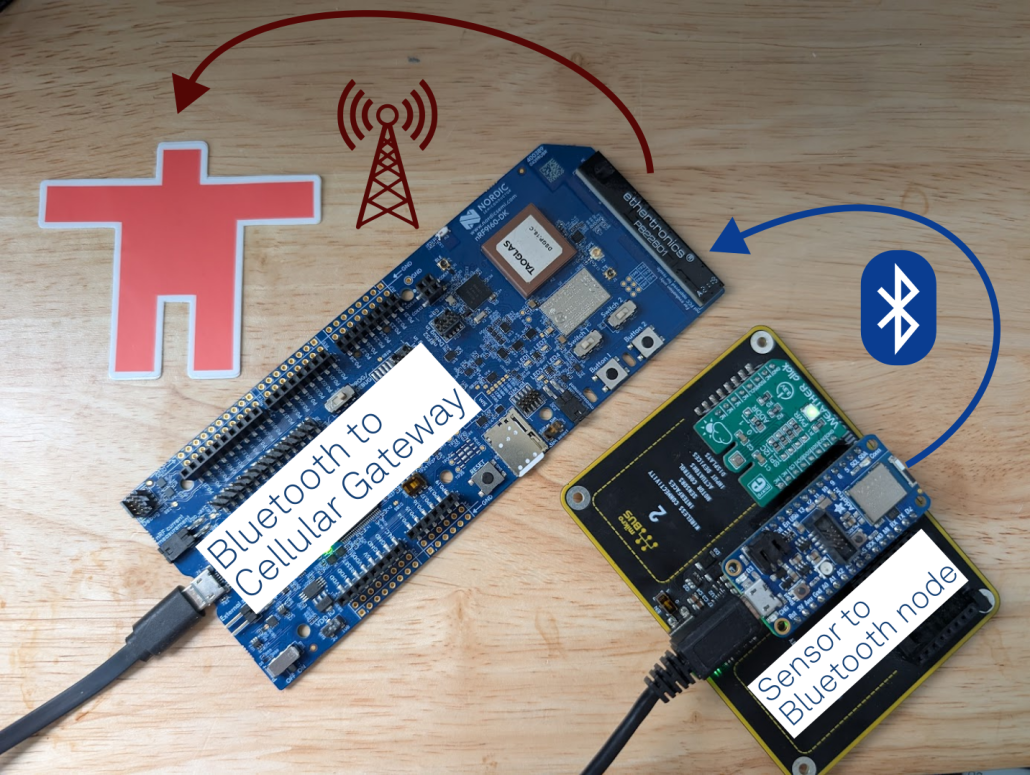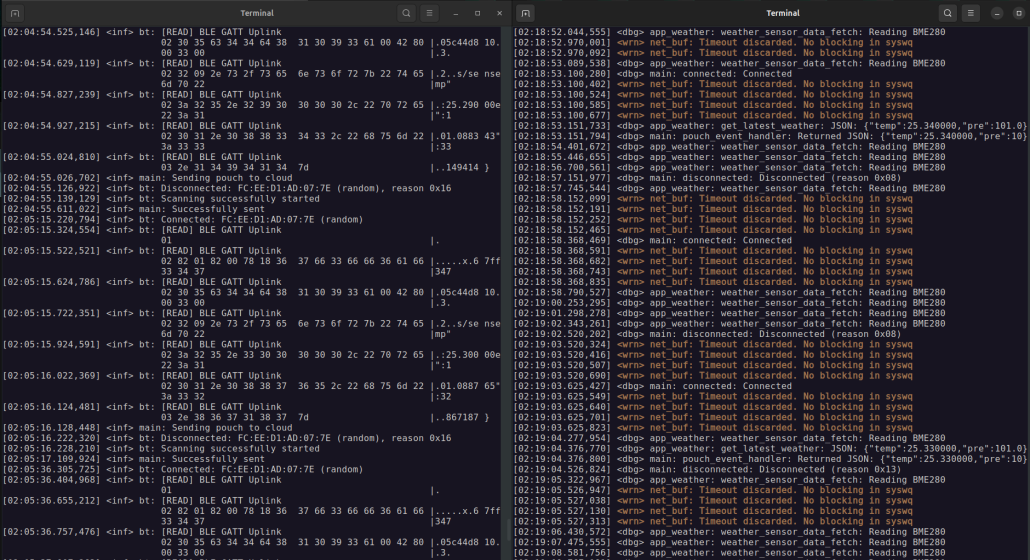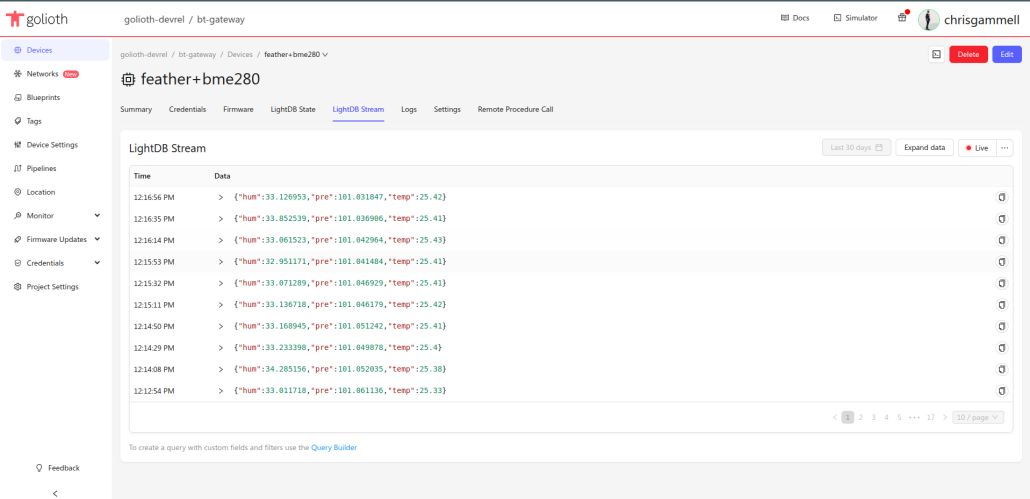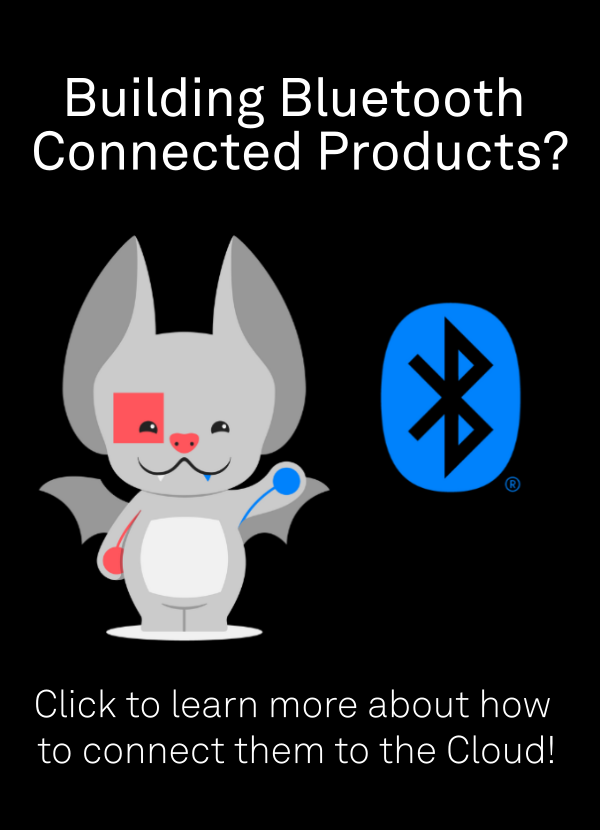A couple of weeks ago we announced our new Bluetooth-to-Cloud capabilities and how it will transform your device fleet to encompass all types of devices, whether or not they have an IP address. We are super excited to offer this to a select group of participants who are starting to try it out now.
As the in-house hardware person, I get to try out the innovations coming from our Engineering team as one of the earliest users. I can say this new development is very exciting and will open up a wide range of new applications. I’m already designing and programming new hardware that looks like an AirTag (with additional functionality) and I’m starting a series that will show you how to do the same.
But I thought today I’d show you how the Bluetooth SDK is already running on my bench and sending data from a Bluetooth device through an MCU based gateway up to the Golioth Cloud.
How the demo works
The new capabilities of Golioth on non-IP devices should feel very familiar, if you’re already using Golioth. From the device (node) side, you’ll capture data like you normally would in Zephyr. In my case, I’m communicating with a BME280 over i2c with a dedicated thread. The Zephyr sensors subsystem formats the incoming data which is added to a JSON string and sent up to the Cloud. Instead of pushing that string into the golioth_stream_set_async (from the Golioth Firmware SDK) we now push it into the pouch_uplink_entry_write (from the Bluetooth SDK).
 Looking at the terminal we see the Bluetooth node (right side) taking a reading every second in an RTOS thread and transmitting it to the Gateway (left side) every 20 seconds. This gets proxied up to Golioth, the Pouch gets ‘unwrapped’, the data is sent through Pipelines, and it arrives in the device record for the node.
Looking at the terminal we see the Bluetooth node (right side) taking a reading every second in an RTOS thread and transmitting it to the Gateway (left side) every 20 seconds. This gets proxied up to Golioth, the Pouch gets ‘unwrapped’, the data is sent through Pipelines, and it arrives in the device record for the node.
 This data is being routed to our internal timeseries database product called LightDB Stream. You can see the BME280’s data (Temperature, Humidity, Air Pressure) represented in the Golioth Console under the LightDB Stream tab for the Bluetooth Node
This data is being routed to our internal timeseries database product called LightDB Stream. You can see the BME280’s data (Temperature, Humidity, Air Pressure) represented in the Golioth Console under the LightDB Stream tab for the Bluetooth Node
What’s next for Bluetooth?
We’ve already started accepting some of our signups for Early Access and expect to be letting more folks in soon. You can sign up today to take part in the Early Access Program. We also are regularly pushing out new capabilities and exciting ways to interact with non-IP devices. We’ll continue to publish about them here, but also will be discussing over on our Forum. See you there!



No comments yet! Start the discussion at forum.golioth.io